AMD vs. Intel: Battery Life Investigated
by Jarred Walton on August 5, 2009 5:00 PM EST- Posted in
- Laptops
Laptops: Comparing Apples to Apples
Anyone looking to go out and purchase a new laptop is almost certainly interested in a couple things: how much does it cost, and what sort of battery life can you expect? Answering those questions for any specific laptop is simple enough, provided we can get a sample unit for testing. However, it becomes more difficult to answer these questions when you're looking at the big picture -- i.e. AMD vs. Intel laptops. The pricing question is easier: laptops using AMD platforms are (usually) cheaper than equivalent Intel platform laptops. That's simple enough: you're paying more for the Intel brand. But what about battery life?
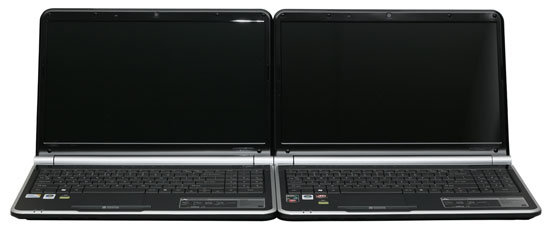 |
We have long tried to answer that question, but the best we could do up until this point was to compare "similar" laptops. Getting the same LCD, hard drive, optical drive, and most importantly battery has been very difficult -- so difficult that we have not been able to do it. A few manufacturers offer competing AMD and Intel laptops with very similar specifications, but no one seemed willing to send their AMD-based system. Were they afraid of cannibalizing sales of their more expensive laptops? Did they just think that an AMD-based laptop wouldn't stand up well in our testing? We don't know for sure, but what we do know is that Gateway has stepped up to the plate and sent us two all but identical laptops. We've been busy the past week or two putting the laptops through our test regimen, and we will have the full review shortly. In the meantime, we thought you might be particularly interested in the battery life you can expect.
Here's a quick look at the two laptops. On top is the AMD-based Gateway NV52, and below it is the Intel-based Gateway NV58.
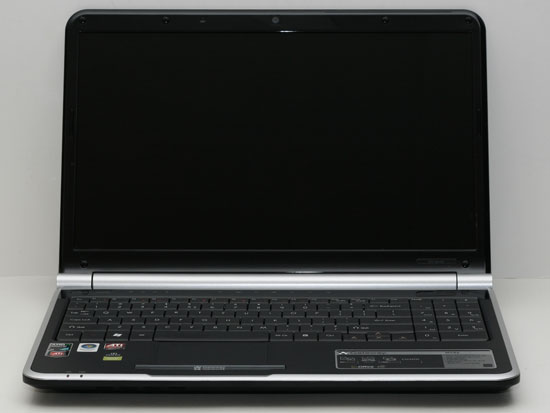 |
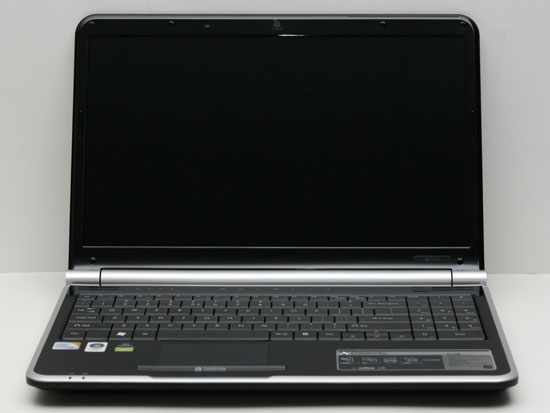 |
Here's a second look, focusing on the keyboards. Once again, AMD is above and Intel is below.
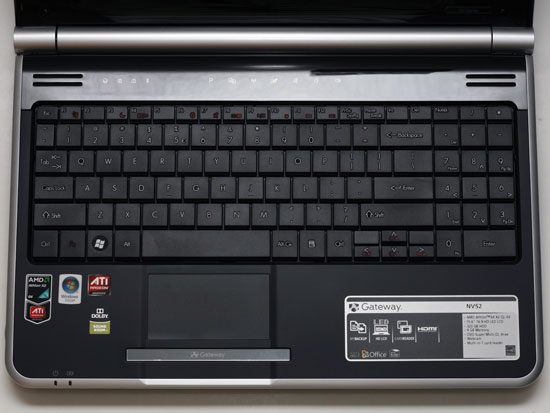 |
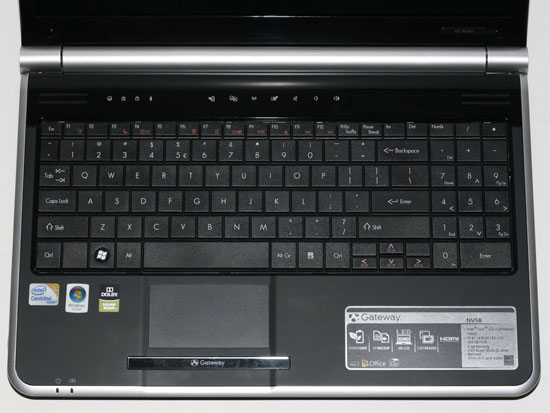 |
The chassis are identical from the outside, and everything else is the same as well other than the motherboard, chipset, and processor. Both come with 4GB DDR2 memory, a 15.6" 1366x768 LED backlit LCD, 320GB 5400 RPM hard drive, and a DVDRW. Both also include Gigabit Ethernet and 802.11n WiFi (Intel WiFi Link 5100 for the NV58 and Atheros AR928X for the NV52). In fact, even the CPUs have the same 2.1 GHz clock speed -- not that CPU clock speed matters -- as well as 35W TDP ratings -- not that that matters either, as we'll soon see. On the AMD side, we have the QL-64 (65nm, 2.1GHz, 2x512K L2, 3600MHz HyperTransport bus), and on the Intel laptop we have the T6500 (45nm, 2.1GHz, 2MB shared L2, 800MHz FSB). We should also mention that the NV58 costs more than the NV52, $500 for the NV52 and $580 for the NV58. What does the extra $80 buy you?
We will have performance numbers in our upcoming full review, but considering this is a match between AMD's old dual-core Athlon 64 X2 (K8 architecture) and Intel's Core 2 Duo, you can probably already guess the results. Intel is quite a bit faster in all of the CPU benchmarks. On the other hand, the AMD platform comes with much better integrated graphics, so if you would like to do a bit of 3D gaming on occasion (at low to medium detail levels) AMD easily wins the graphics benchmarks. Now let's look at battery life.










80 Comments
View All Comments
sublifer - Thursday, August 6, 2009 - link
Don't know how I missed those posts... I thought I read through them all to make sure my concern wasn't already raised.Apologies
mmatis - Thursday, August 6, 2009 - link
You say:"For now, if you're looking for an inexpensive laptop (not a netbook), you need reasonable battery life, and you don't care about graphics performance we suggest saving up the extra $50-$100 for an Intel-based system."
Why not take the "extra $50-$100" and buy a spare battery or a larger battery? THEN which one has the longer battery life?
lyeoh - Friday, August 7, 2009 - link
For some reason spare batteries cost a lot nowadays at least when someone I know was buying a laptop AND wanted a spare battery. The spare battery cost more than USD250.A retailer for a different laptop said its spare batteries were about USD140, but when we checked they didn't have any in stock (none in the entire country either), and we would have to order and wait for weeks.
jamawass - Thursday, August 6, 2009 - link
These low cost laptops aren't really designed for much portability so battery life is a moot point. I was shopping around for a sub $700 machine and decided on AMD, the reason: virtualization support, I plan on upgrading to Win 7 professional with xp mode. I couldn't find a single Intel cpu in that price range that supported virtualization.drmo - Thursday, August 6, 2009 - link
I think many people would still want to have enough battery life to watch a DVD at an airport or on a plane for those infrequent trips. The buy a bigger battery for the extra $50-100 is a very valid point though. And when I go on trips I like to be able to do some light gaming as well, and having to pay the extra $100-200 for discrete graphics which kill the battery life at other times (unless it can switch off) is not worth it.I'm curious as to why the AMD system sucked so bad to payback DVDs. This seriously sounds like a driver issue. I mean, was the CPU at 100%? Shouldn't it be offloaded to the decoder? Or does the decoder suck more juice??? I really think the full review should look into this.
This was a great teaser for the full review.
JarredWalton - Thursday, August 6, 2009 - link
The DVD playback is likely caused by the AMD CPU not power saving as well as the Intel when under a light load (maybe 5-10% CPU usage). Also, Cool 'n Quiet does not do AMD any favors in single-threaded tasks. I'm not sure if there's more to the DVD playback issue than that, but the results are relatively consistent with the other "heavy surfing" test (which is actually about the same 5~10% CPU load).drmo - Thursday, August 6, 2009 - link
"The DVD playback is likely caused by the AMD CPU not power saving as well as the Intel when under a light load (maybe 5-10% CPU usage). "I think you are right, but if this is a function of architecture, then that AMD should fix it; I mean, why have 100% power consumption if only 10% of CPU cycles are being used?
I guess the number makes sense compared to x264 test because the DVD-ROM is also using energy in the DVD test. I suppose having a file on the hard drive is better than playing off the DVD-- another reason arguing for legal digital copies.
monomer - Thursday, August 6, 2009 - link
If this section is going in the full-blown review, would it be possible to add in some CPU usage charts to go along with the battery life charts? It would be interesting to see another data point to show how much the CPU (and indirectly the GPU) affects each of the battery life tests.medi01 - Thursday, August 6, 2009 - link
So we have 2 laptops, and the one with MUCH FASTER GPU eats roughly 30% more power. So what?JarredWalton - Thursday, August 6, 2009 - link
And the other provides a MUCH FASTER CPU along with 25% more battery life. If you don't play modern 3D games at all (and you really shouldn't on any of the IGPs IMO), having a fast GPU is silly. I can't tell you how many people I know that have never run anything more taxing (GPU-wise) than Aero Glass on their computer.